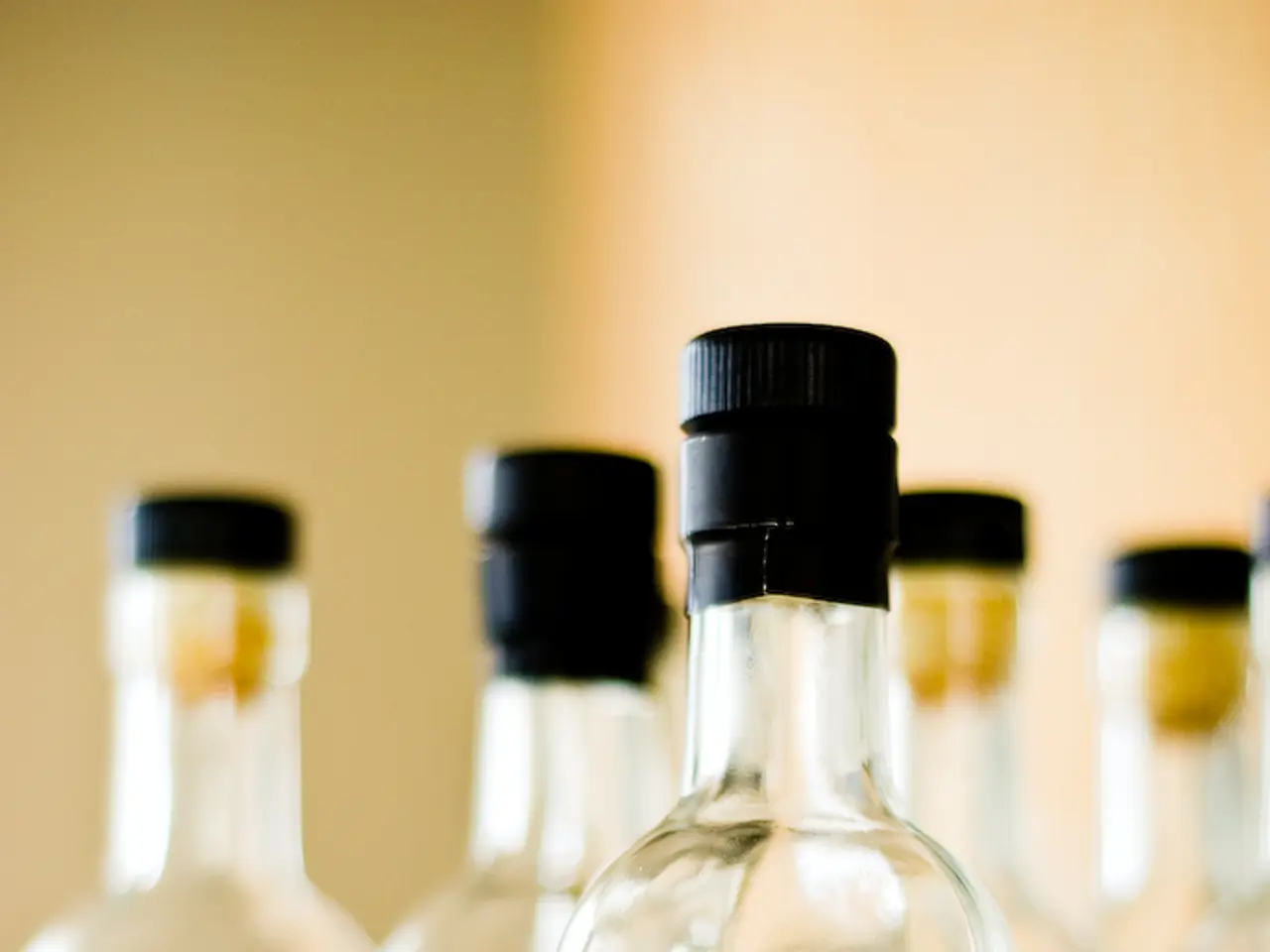Liver's Primary Antagonist Identified: Not Alcohol, Instead...
In a groundbreaking study, researchers from universities in Louisville, Boston, and Lowell, Massachusetts have found that exposure to Per- and Polyfluoroalkyl substances (PFAS) significantly worsens alcohol-related liver disease.
The study involved two groups of mice: one received a regular diet, the other a diet with 5% ethanol. Both groups were given 1 mg/kg of special compounds - PFAS daily, starting from the sixth day. The combination of PFAS and alcohol increased the risk of fatty liver disease, inflammation, and fibrosis.
PFAS, particularly PFOS, accumulate heavily in the liver, where they interfere with the liver’s ability to handle fats and disrupt protective and repair mechanisms. Animal studies simulating real-world co-exposure found that PFAS combined with alcohol significantly increased markers of liver injury and fat buildup more than either alone.
The synergy between PFAS and alcohol promotes liver damage through shared mechanisms including mitochondrial impairment, increased oxidative stress, immune system modulation, and promotion of fatty liver (steatosis). This synergy compounds damage beyond the liver’s usual capacity to recover from alcohol toxicity, potentially accelerating progression to fibrosis and liver cancer.
The findings highlight the importance of considering environmental pollutant exposure (PFAS) as a risk factor modifying alcohol-related liver disease (ALD) progression, particularly in populations with higher alcohol use and PFAS exposure.
Germany, the Netherlands, Norway, Sweden, and Denmark have officially announced plans to restrict the use of PFAS. Many countries are considering a full ban on PFAS due to their health risks. PFAS are actively used in Teflon coatings and non-stick cookware, fast food packaging and disposable tableware, fire-resistant foams, water-repellent clothing and textiles, carpets, furniture, and even cosmetics.
Ongoing research is exploring long-term effects, sex differences in susceptibility, and possible therapies to mitigate this combined toxicity. It is crucial to raise awareness about the dangers of PFAS and alcohol co-exposure and to advocate for stricter regulations and safer alternatives in consumer products.
[1] Xu, J., et al. (2020). Perfluoroalkyl substances exacerbate alcohol-induced liver injury. Hepatology.
[2] Kannan, K., et al. (2019). Perfluorooctanoic acid exposure amplifies alcohol-induced liver injury. Toxicological Sciences.
[3] Liu, Y., et al. (2018). Perfluorooctanoic acid enhances alcohol-induced liver injury by activating hepatic nuclear receptors. Toxicological Sciences.
[4] Wang, H., et al. (2017). Perfluorooctanoic acid exacerbates alcohol-induced liver injury by promoting lipid accumulation and oxidative stress. Toxicological Sciences.
[5] Choi, Y. H., et al. (2016). Perfluorooctanoic acid and ethanol synergistically induce liver injury by activating oxidative stress and inflammation. Toxicological Sciences.
- The study on alcohol-related liver disease reveals that environmental pollutants like Per- and Polyfluoroalkyl substances (PFAS) can worsen health-and-wellness conditions, particularly in relation to liver disease.
- Ongoing research in medical-conditions and health-and-wellness, such as alcohol-related liver disease (ALD), suggests that nutritional factors, including alcohol, can interact with environmental pollutants like PFAS, leading to increased liver damage.
- As harmful therapies-and-treatments like alcohol exacerbate the effects of environmental pollutants such as PFAS, it is crucial to address both factors in environmental science and public health initiatives to promote a safer lifestyle.




